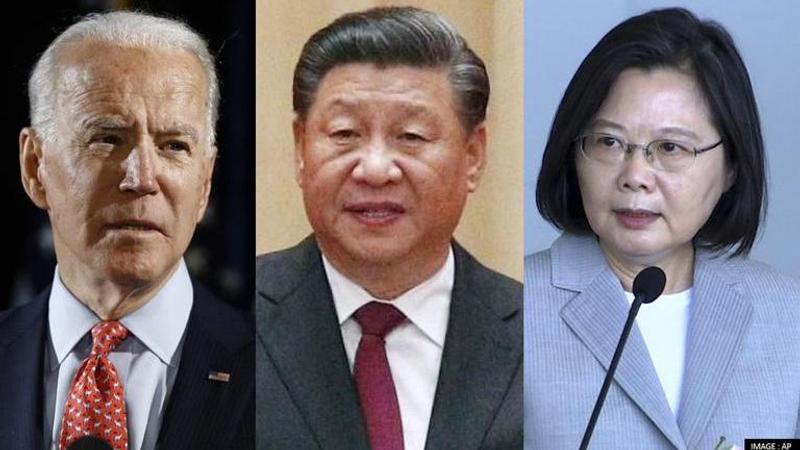Published 13:40 IST, January 17th 2022
Taiwan seeks to join US’ Indo-Pacific economic framework to counter Chinese B&R
Beijing’s aggressive actions in Indo-Pacific threaten movement of more than $3 trillion worth of commerce each year, US Secretary of State had informed

Taiwan on Sunday announced that it will seek to join Washington’s ‘Indo-Pacific economic framework’, an initiative planned by the Biden administration for 2022 to boost trade ties in the region that accounts for one-third of the United States exports, and an estimated $900 billion in foreign direct investment. Biden had formally announced the establishment of such a trade pact in the East Asia Summit in late October 2021, where he iterated that the United States will explore “the development of an Indo-Pacific economic framework” in 2022. He had then dispatched his Commerce Secretary Gina Raimondo and USTR Katherine Tai to Japan, Malaysia, Singapore, South Korea, and other nations in the Indo-pacific for potential negotiations.
The US-led Indo-Pacific will be the first major trade and economic initiative in the region other than the cooperative supply chain agreement aimed at bolstering America’s engagements in the vast contentious region. “We’re determined to ensure freedom of navigation in the South China Sea, where Beijing’s aggressive actions there threaten the movement of more than $3 trillion worth of commerce every year,” US Secretary of State Antony Blinken had iterated earlier.
Accusing China’s expansionist agenda and belligerence as a major hindrance to global trade, economy, and progress, Blinken stressed that when the commerce can’t traverse open seas “it means that farmers are blocked from shipping their produce; factories can’t ship their microchips; hospitals are blocked from getting lifesaving medicines.” And in order to counter such unlawful, expansive South China Sea maritime claims, which are inconsistent with international law, the Biden administration plans to strengthen strategic trade and commerce partnerships and cement economic voids.
Commerce Secretary Gina Raimondo, US Trade Representative Katherine Tai and Biden’s Secretary of State Blinken laid the groundwork during their Asia tour the last couple of months. The ‘Indo-Pacific economic framework’ aims to make supply chains less reliant, focus on clean energy, tighten the oversight of exports and safeguard data and artificial intelligence, setting new goals to improve standards for the digital economy and technology, strengthening cooperation on infrastructure to counter Beijing’s Belt & Road initiative.
Taiwan government paying 'close attention'
Taiwan government is now paying “close attention” to the Biden administration’s regional economic pact, sources told Taipei Times, speaking on the condition of anonymity. The Indo-Pacific economic framework is on the table and could launch as early as next month after negotiations with key allies India, Australia, and Japan in the region, a Taiwanese official told the newspaper. Joining the new economic initiative led by Washington would not overlap or affect Taiwan’s ability to join the Comprehensive and Progressive Agreement for Trans-Pacific Partnership (CPTPP), the official iterated.
The free trade agreement was signed by 11 Asia-Pacific countries representing 13 percent of global GDP but was hindered after the US pulled out. After China submitted an application to join CPTPP, Taiwan on Sept. 22, 2021, also followed in the footsteps of Beijing and applied to join the arrangement under the name “the Separate Customs Territory of Taiwan, Penghu, Kinmen and Matsu” via its representative in New Zealand.
Updated 13:40 IST, January 17th 2022




